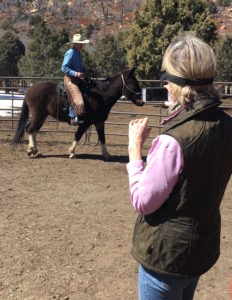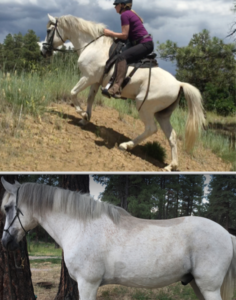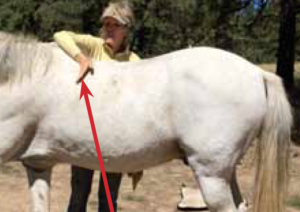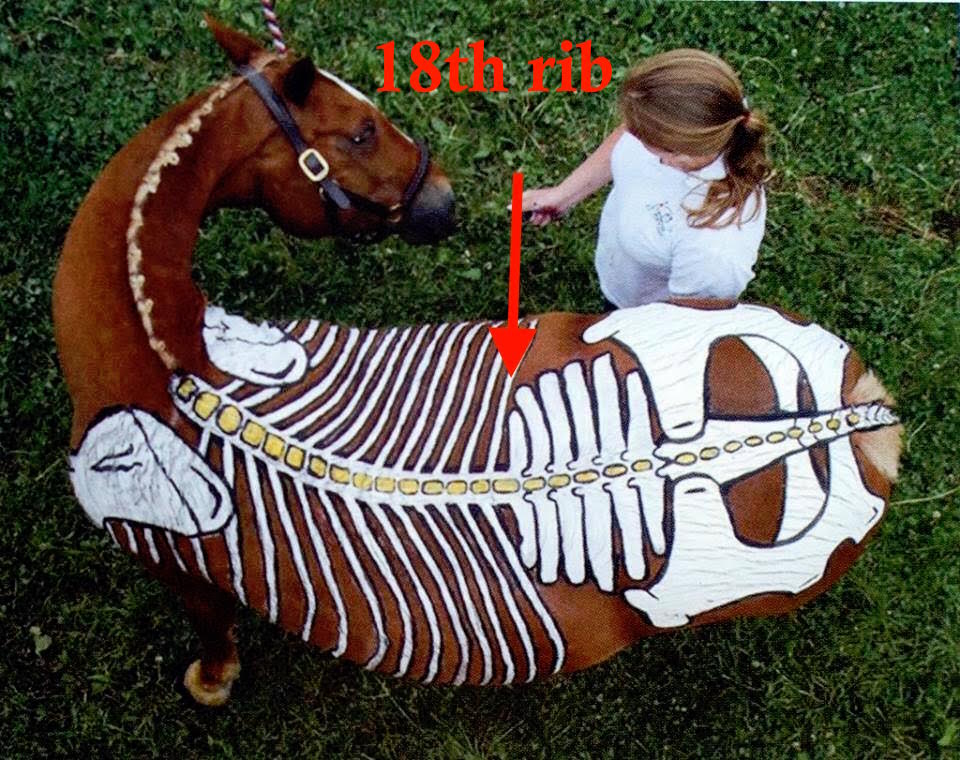
Letitia Glenn video-records Steve Peters with Jolene.
This week, we visited with Letitia Glenn, owner of Natural Horseman Saddles. The Colorado-based horsewoman showed us how much more comfortable Jolene the mule was able to move when properly fit. For years, Glenn has helped riders understand saddle fit and helped dismiss some common myths. Her clients include clinician Dave Ellis and all members of the Police Department Mounted Patrol of Austin, Texas.
Glenn writes:
If you’ve ever been told to avoid putting your saddle back where your horse would have to carry some weight behind the 18th rib, we suggest you challenge that advice by asking your horse.
In the images at right, Dino is a Paso Fino with a typically short back and we tried to follow that very rule when I first rode him. Even a small saddle restricted his shoulders because it had to be shifted quite far forward to stay in front of his lumbar vertebrae. When we rode in the mountains, I noticed that he managed to shift the saddle back further when we climbed hills and I could feel his strides instantly became more powerful and smooth.

Dino experienced more comfort when the saddle was set further back than standard fitting.
I started leaving the saddle back there, paying close attention to his movement and checking carefully for tenderness in his back when we got home. We’ve been riding that way for years now, and Dino clearly prefers it. He doesn’t get sore back there and he’s 18 years old.
I would imagine that most traditionally-trained horse people looking at Dino’s sweat pattern (see right) might think we’ve been cruel to him. But I always check his back when returning from a ride and again when I saddle him the next time. No flinching, so I know he’s happy.
I make sure that the front of my saddle is behind his shoulder blade’s back edge when I tack up English or when riding Western, that the front concho is behind his shoulder blade’s back edge. We have a wonderfully rhythmic rides.
When the saddle’s posterior edge eclipses the last thoracic vertebra (see image below), it’s not as if it is restrictive back there. The slight “pivot point” between the 18th rib and the lumbar group will be accommodated because the saddle does not clamp down there.
- head carriage being too high
- midsection sunk too low
- abdominal muscles unable to contract and push the back up
- inability of back muscles to flex in the proper direction because they’re tense and contracted
- hips rotated forward with hind legs strung out too far behind instead of underneath

Letitia shows shoulder blade, saddle and shim placement
If you’re interested in experimenting with saddle fit, try this experiment:
- Saddle up with your saddle forward so that the girth is right up in the armpit of your horse and you feel pressure when you reach under the saddle up along the bars where the shoulders need to bulge in full stride. Ride around a bit and ask for a canter.
- Saddle up with the front of the English saddle behind the back edge of the scapula or the front concho of your Western saddle behind this back edge of the scapula while your horse is standing still and you have at least one shim (preferably a tapered foam one) set back so the “nose” of the shim is at the scapula’s maximum back-swing point. Ride around a bit and ask for a canter.
Please let us know what you felt and noticed. Email us by scrolling down on this page. We’re always thrilled to collect more empirical data!

Don’t fret if the end of the saddle extends beyond the 18th rib
I am so glad you connected with Letitia! She is a wealth of knowledge and determination when it comes to horse saddle comfort.